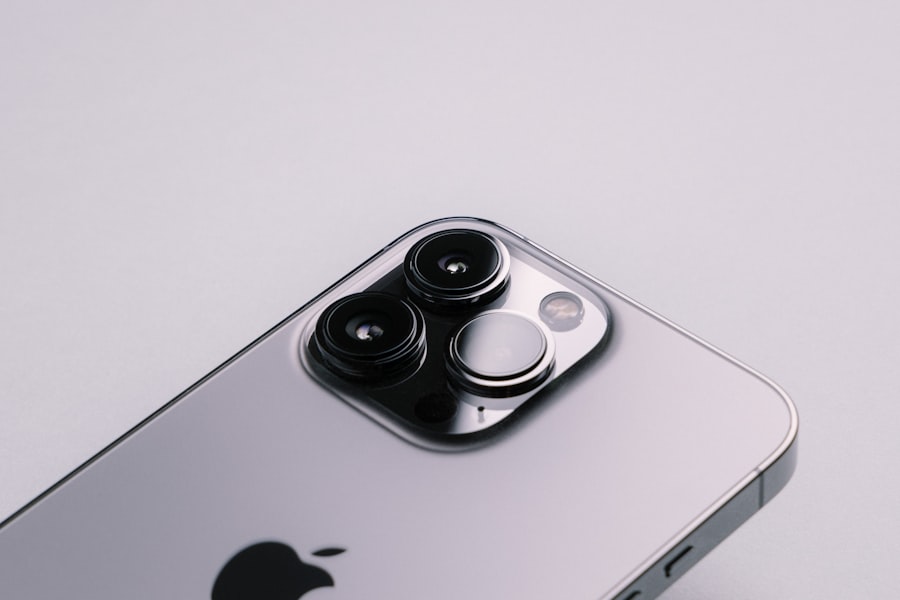The weight of an iPhone is often an overlooked aspect when consumers consider their next smartphone purchase. While many focus on features such as camera quality, battery life, and processing power, the weight of the device plays a crucial role in the overall user experience. The tactile sensation of holding a smartphone, its portability, and how it fits into daily life are all influenced by its weight.
For instance, a heavier device may feel more premium and robust, while a lighter one can enhance portability and ease of use. Understanding the nuances of iPhone weight can help users make informed decisions that align with their preferences and lifestyle. In the competitive smartphone market, where every detail matters, Apple has consistently refined the design and weight of its iPhones.
The balance between durability and lightweight construction is a delicate one, as Apple aims to provide a device that feels substantial yet remains easy to carry. This article delves into the evolution of iPhone weight, compares various models, examines the factors influencing weight, and discusses how it impacts user experience. By exploring these dimensions, we can appreciate the significance of iPhone weight in the broader context of smartphone design and usability.
Key Takeaways
- iPhone weight has evolved over the years, impacting user experience and handling.
- Different iPhone models have varying weights, with newer models generally being lighter.
- Factors such as materials, components, and battery size affect the weight of an iPhone.
- The weight of an iPhone can impact user experience, comfort, and convenience.
- Tips for handling and carrying an iPhone include using a case and being mindful of its weight.
The Evolution of iPhone Weight
Since the launch of the original iPhone in 2007, Apple has undergone a remarkable journey in terms of design and engineering, which has directly influenced the weight of its devices. The first iPhone weighed approximately 135 grams (4.8 ounces), a figure that was considered relatively light for its time. However, as technology advanced and features became more sophisticated, subsequent models began to see fluctuations in weight.
For example, the introduction of the iPhone 4 in 2010 brought a glass back and stainless steel frame, resulting in a heftier device at 137 grams (4.83 ounces). This shift marked a significant change in how users perceived the weight of smartphones; it was no longer just about portability but also about the materials used and their implications for durability. As Apple continued to innovate, the weight of the iPhone fluctuated with each new release.
The iPhone 6 and 6 Plus introduced larger screens and aluminum bodies, which contributed to a slight increase in weight—143 grams (5.04 ounces) for the standard model and 172 grams (6.07 ounces) for the Plus variant. However, with advancements in manufacturing techniques and materials, later models like the iPhone 12 and 13 series saw a return to lighter weights despite their larger sizes. The iPhone 12 weighed 164 grams (5.78 ounces), while the iPhone 13 was slightly heavier at 174 grams (6.14 ounces) due to enhancements in battery capacity and camera technology.
This evolution reflects Apple’s commitment to balancing aesthetics, functionality, and user comfort.
Comparing iPhone Weights Across Different Models

When comparing the weights of various iPhone models, it becomes evident that Apple has strategically designed each iteration to cater to different user preferences. For instance, the iPhone SE (2nd generation), weighing in at just 148 grams (5.22 ounces), appeals to users who prefer a compact device without sacrificing performance. In contrast, the iPhone 14 Pro Max, which weighs approximately 240 grams (8.47 ounces), targets those who prioritize advanced features such as enhanced camera capabilities and larger displays.
The differences in weight across models can also be attributed to their respective sizes and materials. The introduction of Pro models often brings additional features like improved camera systems and larger batteries, which can contribute to increased weight. For example, while the standard iPhone 14 weighs around 172 grams (6.07 ounces), the Pro model’s added functionalities push it closer to 206 grams (7.27 ounces).
This comparison highlights how Apple tailors its devices to meet diverse consumer needs while maintaining a focus on design aesthetics.
Factors Affecting iPhone Weight
| Factor | Description |
|---|---|
| Battery Size | The capacity of the iPhone’s battery can affect its weight. |
| Materials Used | The type of materials used in the construction of the iPhone can impact its weight. |
| Screen Size | Larger screens may contribute to a heavier iPhone. |
| Internal Components | The size and weight of internal components such as processors and memory can affect the overall weight of the iPhone. |
Several factors contribute to the overall weight of an iPhone, with materials being one of the most significant influences. Apple has utilized various materials over the years, including aluminum, glass, and stainless steel. Each material has its own density and weight characteristics that affect the final product.
For instance, while aluminum is lightweight and durable, stainless steel offers a premium feel but adds extra weight. The choice of materials is not merely aesthetic; it also impacts durability and user experience. Another critical factor is the technology integrated into each model.
As smartphones evolve, they incorporate more advanced components such as larger batteries, enhanced camera systems, and additional sensors. These components can significantly increase weight without compromising performance. For example, the addition of LiDAR technology in Pro models adds functionality but also contributes to an increase in overall device weight.
Furthermore, advancements in battery technology have allowed for larger batteries that provide longer usage times but also add to the heft of newer models.
The Impact of iPhone Weight on User Experience
The weight of an iPhone can significantly influence user experience in various ways. A lighter device is often perceived as more comfortable for prolonged use, especially for activities such as texting or browsing social media. Users who frequently carry their phones in pockets or bags may prefer lighter models that do not add unnecessary bulk or strain on their clothing or accessories.
Conversely, some users appreciate a heavier device as it can convey a sense of quality and sturdiness. Moreover, weight can affect how users interact with their devices during specific tasks. For instance, photographers using an iPhone for extended periods may find that a lighter model reduces fatigue during long shooting sessions.
On the other hand, gamers might prefer a slightly heavier device that feels more substantial during intense gameplay sessions. Ultimately, individual preferences play a crucial role in how users perceive the impact of weight on their overall experience with an iPhone.
Tips for Handling and Carrying an iPhone

To maximize comfort when handling an iPhone, users can adopt several strategies that take into account its weight and design features. One effective approach is to utilize ergonomic grips or cases designed specifically for comfort during extended use. These accessories can help distribute weight more evenly across the hand, reducing strain during prolonged interactions with the device.
Additionally, users should consider how they carry their iPhones throughout the day. For those who prefer pockets over bags, selecting lighter models may be advantageous to avoid discomfort or bulkiness. Alternatively, using crossbody bags or pouches can help distribute weight more evenly when carrying heavier devices like the Pro Max models.
Ultimately, being mindful of how one handles and carries an iPhone can enhance comfort and usability.
The Future of iPhone Weight
As technology continues to advance at a rapid pace, it is likely that future iterations of the iPhone will see further innovations in design and materials that could impact weight. With ongoing research into lightweight materials such as carbon fiber composites or advanced alloys, Apple may find ways to reduce weight without sacrificing durability or performance. Additionally, as battery technology improves—potentially leading to smaller batteries with higher capacities—there may be opportunities to decrease overall device weight while enhancing functionality.
Moreover, consumer preferences will play a pivotal role in shaping future designs. As users become increasingly aware of ergonomics and comfort in their devices, Apple may prioritize creating lighter models that cater to these demands while still offering cutting-edge technology. The balance between innovation and user experience will remain at the forefront of Apple’s design philosophy as they continue to evolve their flagship product.
The Significance of Knowing iPhone Weight
Understanding the weight of an iPhone is essential for consumers looking to make informed decisions about their smartphone purchases. Weight influences not only how a device feels in hand but also how it fits into daily life and activities. As Apple continues to innovate and refine its designs, being aware of how weight impacts user experience can guide individuals toward selecting a model that aligns with their preferences and lifestyle needs.
In an era where smartphones are integral to our daily routines, considering factors such as weight alongside features like camera quality or processing power can lead to a more satisfying ownership experience. Whether one prioritizes portability or prefers a more substantial feel in hand, recognizing the significance of iPhone weight is crucial for making choices that enhance usability and enjoyment in everyday life.
If you are curious about the weight of an iPhone, you may also be interested in learning more about the terms and conditions of owning one. Check out this article for more information on what you need to know before purchasing an iPhone.
FAQs
What is the weight of an iPhone?
The weight of an iPhone varies depending on the model. For example, the iPhone 12 Pro weighs approximately 189 grams, while the iPhone 12 Pro Max weighs around 228 grams.
Why is the weight of an iPhone important?
The weight of an iPhone is important for several reasons, including portability, comfort during use, and overall user experience. A lighter iPhone may be more convenient for carrying around, while a heavier iPhone may feel more substantial and durable.
Does the weight of an iPhone affect its performance?
The weight of an iPhone does not directly affect its performance. Performance is determined by the internal components and software of the device. However, the weight may impact the user’s comfort and handling of the device.
How does the weight of an iPhone compare to other smartphones?
The weight of an iPhone can vary compared to other smartphones on the market. Some smartphones may be lighter or heavier than the iPhone, depending on their design, materials, and features.
Can the weight of an iPhone impact its durability?
The weight of an iPhone is just one factor that can impact its durability. The materials used in the construction of the device, such as glass and metal, as well as the design and build quality, are more significant factors in determining the durability of an iPhone.










